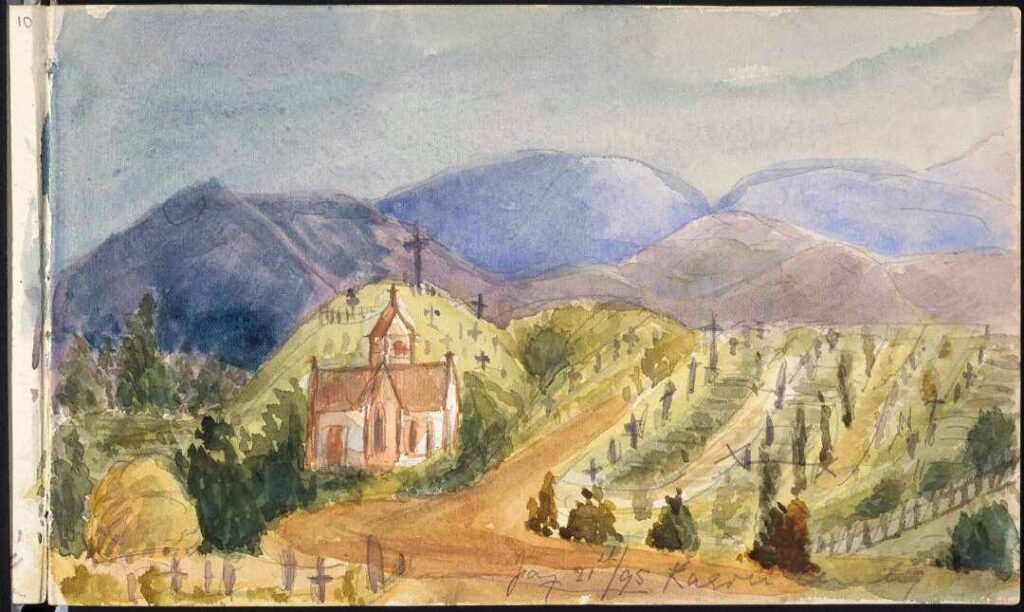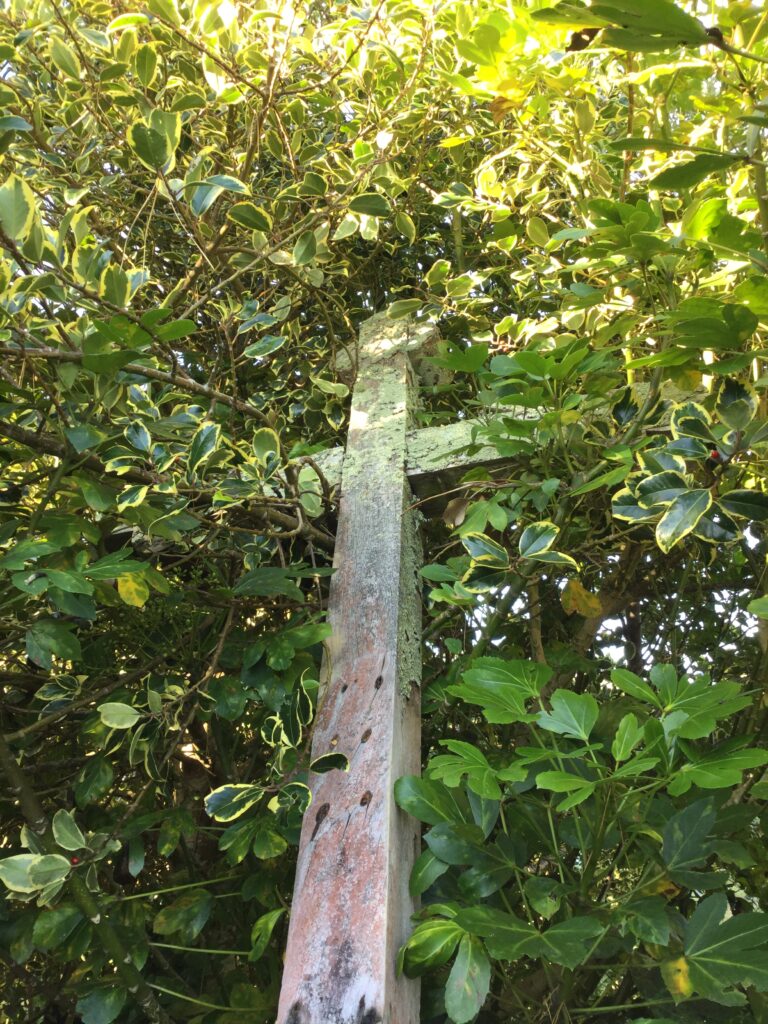We did it!
After months of discussion, planning and fundraising, the restoration of the Historic Wooden Cross is now complete. With thanks to over thirty people who kindly donated to our fundraiser, we commissioned in September to have the cross conserved and restored. It now stands again, on the hill overlooking the oldest parts of the cemetery.
We would like to extend our thanks to those at Wellington City Council who helped us in organising the restoration and the Karori Cemetery team for ensuring that the cross can now be clearly seen.
The biggest thanks must be for those who donated and supported us in our first restoration project at the cemetery. We have a short video on Youtube to record the occasion:https://www.youtube.com/watch?v=6AVNyyf2AFg


Restoration Fundraising
In 1891 an imposing, 3 metre high, cross made from Totara was erected on a hill overlooking the newly opened Wellington cemetery. It stood very visible to passers-by for over a hundred years until a storm toppled it into nearby trees where it has remained, largely intact.
It is one of the oldest wooden artefacts at the cemetery, and the Friends of Karori cemetery want to restore and conserve the cross, then replace it in its original position so that it will be visible once again, and can stand for another 100 years.
We are asking for contributions to enable work to begin to save this important artefact of Wellington’s heritage.

History of the Cross
The cross was installed at the cemetery by Archbishop Redwood in March 1892. There was a similar one, which no longer exists, located at the Mount Street (Catholic) Cemetery in Kelburn.

Medley, Mary Catherine (Taylor), b. 1835 :Karori Cemetery. Jany 21st [18]95.. Medley, Mary Catherine, 1835-1922 :Sketchbook of Mary C. Medley nee Taylor…1895. No. 14.. Ref: E-379-010. Alexander Turnbull Library, Wellington, New Zealand. /records/23147192
The cross is around 3 metres in height and made from Totara, which is a very long-lasting wood. The base supports have however rotted at ground level, where the moisture level in the timber is constantly changing. The timber above ground level is still very sound.
The location of the cross at Karori Cemetery is significant – it stood adjacent to the graves of the Marist priests buried at Karori from 1892 onwards, in a commanding position at the top of the rise. It would have been visible to everyone attending funerals in the earliest Public, Anglican and Jewish areas, as well of course to those nearby in the Catholic section. It became obscured during the latter part of the 20th century when the surrounding trees and shrubbery grew taller.
The cross remained standing for more than 100 years, until sometime during the last decade the inevitable rot became too severe, the footings gave way, and it slumped into nearby trees. Over the years the metal fixings holding the decorative features have rusted out and some have come loose and been lost. It has remained otherwise intact and safely cradled by the trees at a 90o angle to the ground, which allows air to circulate and keeps it from rotting. Photos which show the cross and its features are sufficient for accurate replicas of the missing decorative elements to be made.
The Friends of Karori Cemetery are liaising with the Wellington City Council and any repairs will be in line with the guidelines in the Karori Cemetery Conservation Plan.
Once the work has been completed it is expected the cross would need only limited attention for many decades.
Karori Cemetery staff will assist the restoration process by removing some of the trees and shrubbery in the area to increase light and airflow as well as increasing its visibility to those passing through the central part of the cemetery.
The Friends of Karori Cemetery are advocating for this work to be done to reinstate a major heritage artefact to its rightful place within the first area in which Catholics were buried from the time the cemetery opened in 1892.




